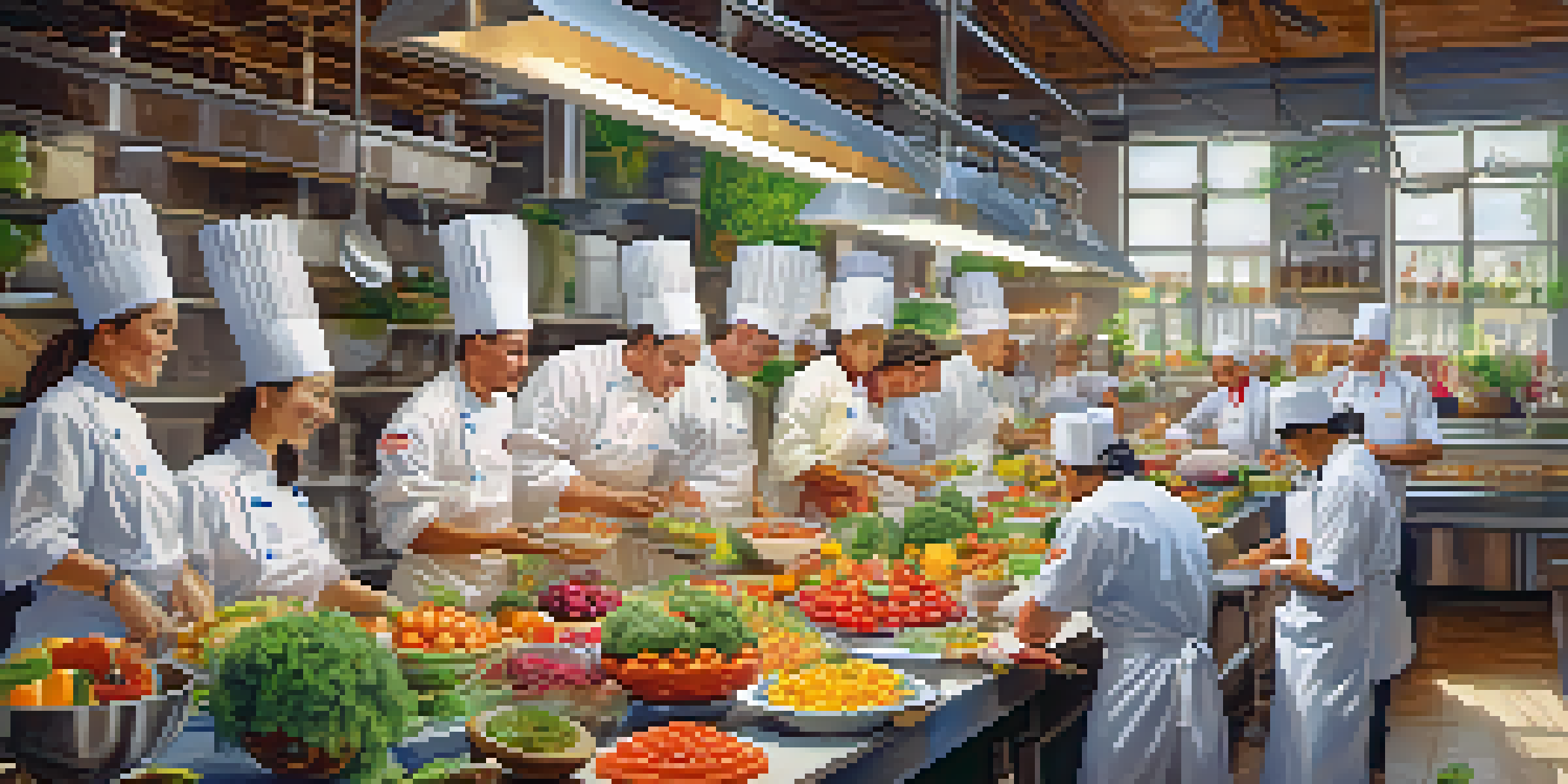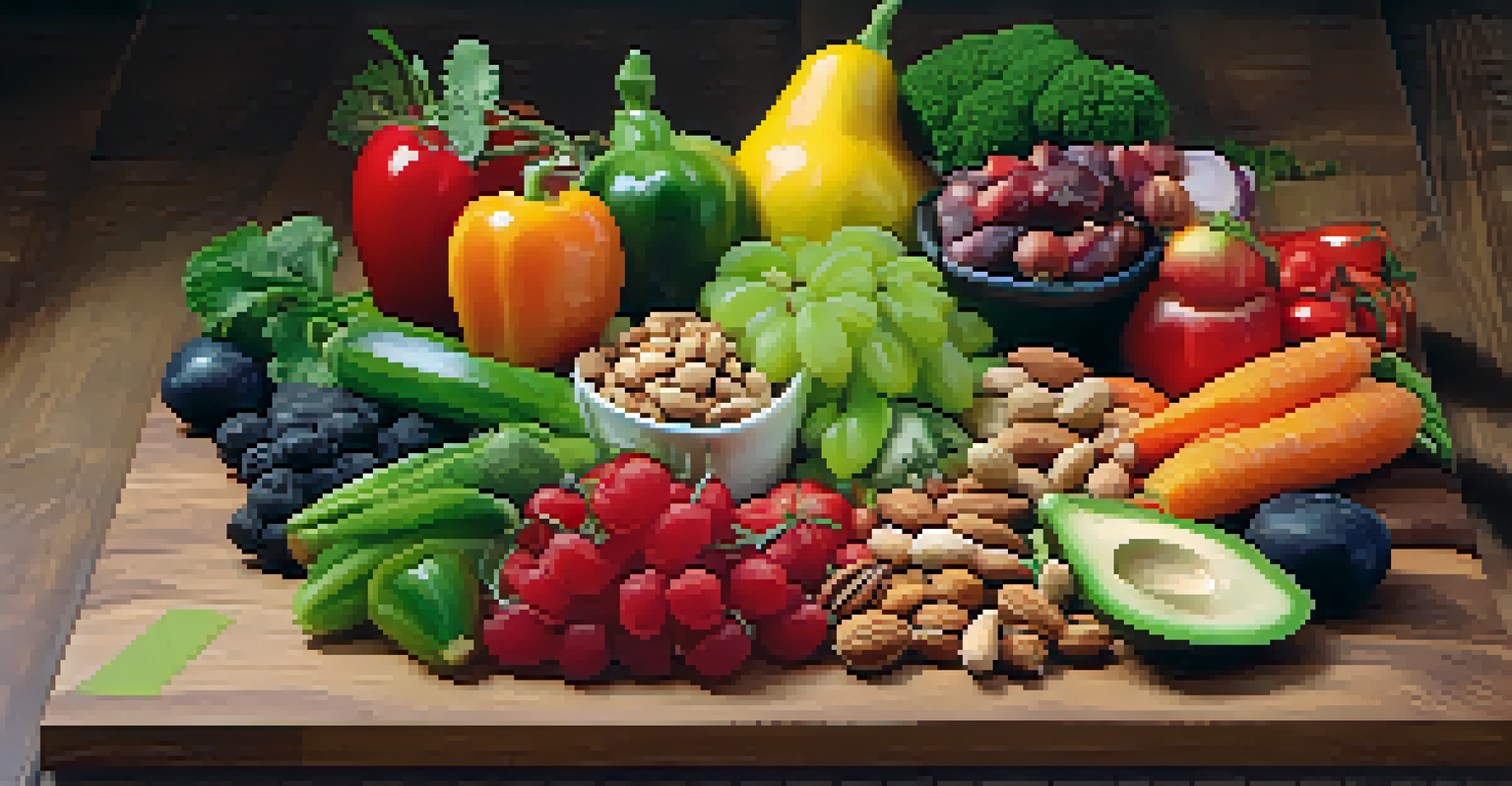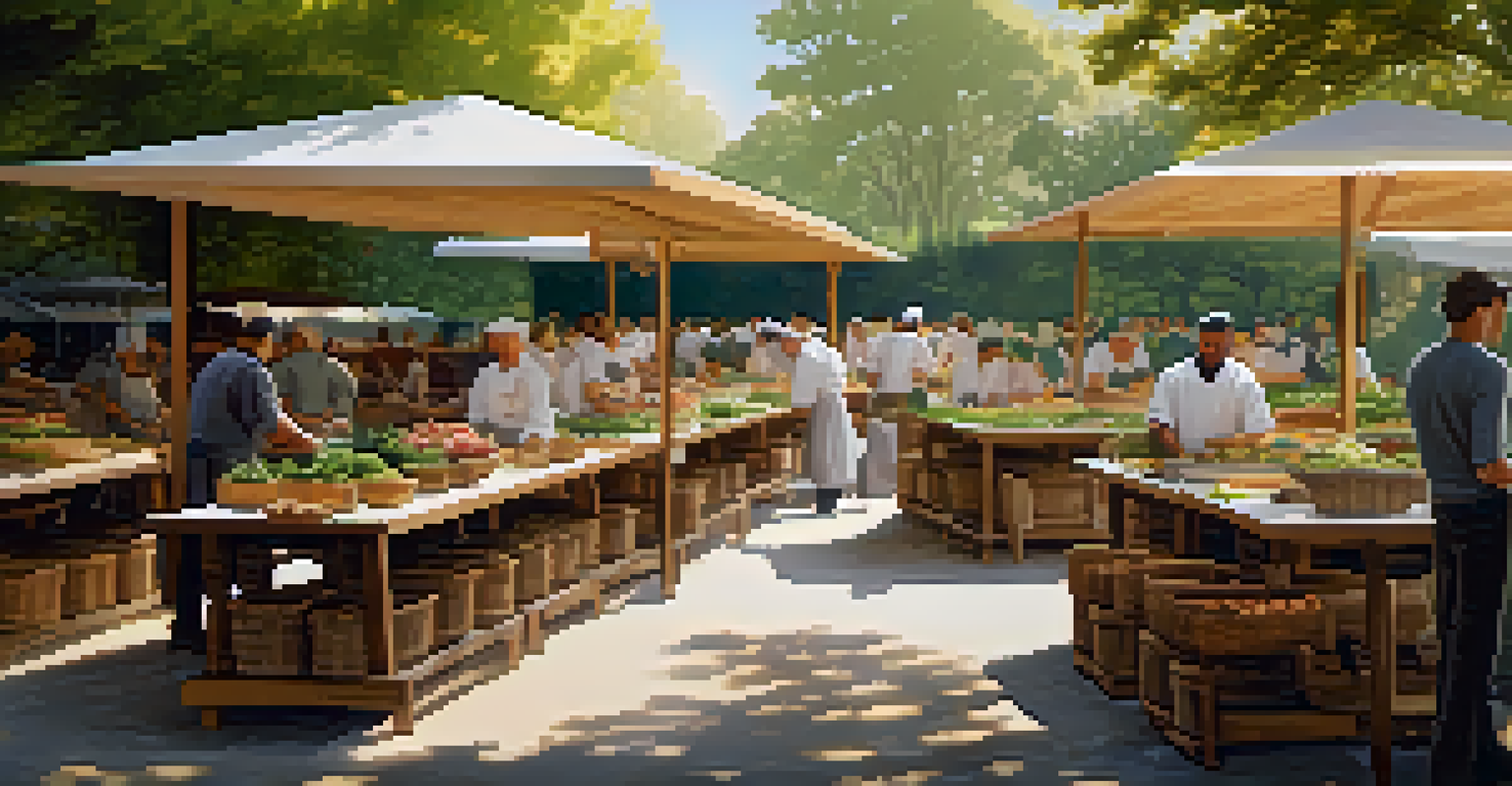Exploring the Rise of Raw Food Culinary Competitions in 2023

Understanding Raw Food Culinary Competitions
Raw food culinary competitions have surged in popularity, showcasing chefs who prepare meals without cooking. These events highlight the creativity and artistry involved in using fresh, unprocessed ingredients. Participants often use a variety of techniques, from dehydrating to blending, to create visually stunning and flavorful dishes.
Let food be thy medicine and medicine be thy food.
These competitions not only challenge chefs but also educate the audience about the health benefits of raw foods. By focusing on nutrient-dense ingredients, contestants aim to prove that raw food can be both delicious and beneficial for well-being. The excitement around these events draws in food enthusiasts and health-conscious individuals alike.
As more people become interested in plant-based diets, raw food competitions serve as a platform for innovation and sustainability. Chefs are now exploring unique flavor combinations and presentation styles, which keeps the audience engaged and inspired. This trend reflects a broader shift towards conscious eating and respect for our food sources.
Key Trends in Raw Food Competitions of 2023
In 2023, we’re witnessing a rise in themes centered around sustainability and local sourcing in raw food competitions. Chefs are increasingly encouraged to use only seasonal and locally grown ingredients, which not only supports local farmers but also minimizes carbon footprints. This trend resonates with consumers who are becoming more environmentally aware.

Another notable trend is the inclusion of diverse culinary backgrounds, which adds depth and variety to the competitions. Chefs from various cultures are bringing their unique perspectives, incorporating traditional methods and flavors into raw food recipes. This cultural fusion enriches the competition and broadens its appeal to a wider audience.
Rise of Sustainability in Competitions
In 2023, raw food culinary competitions emphasize sustainability by promoting the use of seasonal and locally sourced ingredients.
Additionally, the use of technology in raw food preparation has become more prevalent. From high-tech blenders to specialized dehydrators, chefs are leveraging tools that enhance their creativity. This evolution in technique makes the competition not just about food but also about innovation in culinary arts.
The Role of Social Media in Promoting Competitions
Social media has become a vital tool for promoting raw food culinary competitions. Platforms like Instagram and TikTok allow chefs to share their creations and behind-the-scenes moments, generating buzz around upcoming events. Visual content, in particular, plays a significant role in attracting attention to these competitions.
The food you eat can be either the safest and most powerful form of medicine or the slowest form of poison.
Engagement doesn’t stop at just sharing recipes; social media also fosters community. Chefs and food enthusiasts can connect, share tips, and support each other in their culinary journeys. This sense of community helps to elevate the raw food movement, encouraging more people to participate in competitions and embrace the lifestyle.
Moreover, live streaming of competitions has gained traction in 2023. Viewers can watch the action unfold in real time, providing an immersive experience that draws in larger audiences. This interaction not only entertains but also educates viewers about the raw food philosophy.
Health Benefits Driving Interest in Raw Foods
The health benefits of raw food are a significant driver of interest in culinary competitions. Many people believe that raw foods retain more nutrients compared to cooked foods, which can lose vitamins and enzymes during preparation. This perception encourages individuals to explore raw food options, further fueling competition participation.
Furthermore, raw food diets are often associated with various health improvements, such as increased energy and better digestion. As more individuals share their positive experiences, the popularity of raw food competitions continues to grow. Chefs in these events showcase how appealing and healthy raw food can be, thereby attracting health-conscious consumers.
Social Media Boosts Competition Popularity
Platforms like Instagram and TikTok are vital for promoting raw food competitions, helping chefs connect with a wider audience.
As a result, competitions often feature dishes that not only look great but also promote health. Chefs aim to create meals that are as nutritious as they are delicious, making raw food an attractive option for many. This focus on health aligns perfectly with the broader trend of wellness in today’s society.
The Impact of Celebrity Chefs on Raw Food Competitions
Celebrity chefs play a crucial role in popularizing raw food culinary competitions. Their presence often elevates the profile of these events, attracting media attention and a wider audience. When well-known figures endorse raw food, it lends credibility and encourages fans to explore this culinary niche.
Moreover, these chefs bring their expertise and flair, raising the bar for competition standards. Their innovative techniques and presentation styles inspire both participants and spectators. This infusion of celebrity culture into raw food competitions not only enhances the excitement but also encourages aspiring chefs to enter the scene.
The collaboration between celebrity chefs and local competitors can also foster mentorship opportunities. This exchange of knowledge enriches the culinary community and helps to develop new talent in the raw food arena. Ultimately, the influence of celebrities contributes significantly to the growth of raw food culinary competitions.
Challenges Faced by Raw Food Competitors
While raw food culinary competitions are exciting, they come with their own set of challenges. One of the biggest hurdles is the perception that raw food lacks flavor or variety. Competitors must work diligently to prove that raw cuisine can be as rich and satisfying as cooked meals, creating a delightful experience for the judges and audience.
Additionally, sourcing high-quality, fresh ingredients can be a struggle, particularly in regions with limited availability. Competitors often need to be resourceful, finding creative ways to utilize what's in season or available locally. This challenge encourages innovation, but it can also lead to frustration if the desired ingredients are not accessible.
Health Benefits Drive Raw Food Interest
The perceived health benefits of raw foods, such as higher nutrient retention, significantly fuel interest in culinary competitions.
Finally, the time constraints during competitions can add pressure to competitors. Creating visually appealing and delicious raw dishes within a limited timeframe requires both skill and quick thinking. This fast-paced environment tests the chefs' abilities and can be a significant stressor, making preparation and practice essential.
Looking Ahead: The Future of Raw Food Competitions
As we look ahead, the future of raw food culinary competitions appears bright and promising. The increasing awareness of health and sustainability will likely continue to drive interest in these events. More competitions may emerge, catering to various themes and dietary preferences, broadening the landscape even further.
Additionally, we can expect to see more collaborations with health organizations and culinary schools. These partnerships could lead to educational workshops and events that promote raw food lifestyles. By incorporating informative elements, competitions can attract not only chefs but also health-conscious consumers seeking to learn more.

Ultimately, the evolution of raw food culinary competitions reflects a growing appreciation for nutritious, plant-based eating. As trends shift and culinary boundaries expand, these competitions will play a crucial role in shaping the future of food culture. The excitement surrounding raw food is just beginning!